Got back stiffness, pain, or general discomfort? Don’t sit still. At work or at home, get up from your chair at least every 20 minutes, recommends Somerset.
In addition, work the moves on this page into your routine. Over time, they will help unslouch your shoulders; fire up your hip joints; take the knots out of your lower back, shoulders, and neck; and, in general, rejuvenate areas that shirk their duties when you sit too much.
Some of the moves may feel familiar and easy — but don’t rush through them. “New research has shown that static exercises — slow movements performed with attention — improve core stability more than faster, more athletic exercises,” says Somerset.
Strive to perform these moves with precision and focus (even if they seem basic). You should feel some improvement after a week or two.
Perform one set of each move at a deliberate pace prior to a workout, after prolonged sitting, before bed, or any other time you’re feeling stiff or low on energy. You can also do them piecemeal throughout your day.
One rule: “Never move into pain,” emphasizes physical therapist Erica Mundinger. “If one side feels fine and the other side is really sensitive, work the good side.”
If you don’t see results, get checked out by a pro. Ditto if you experience shooting pain down your legs, problems with your bowel or bladder, numbness or tingling in your groin, or pain so debilitating you can’t stand or walk. “Those are signs that something more serious is going on,” says Mundinger.
1. Founder Stretch
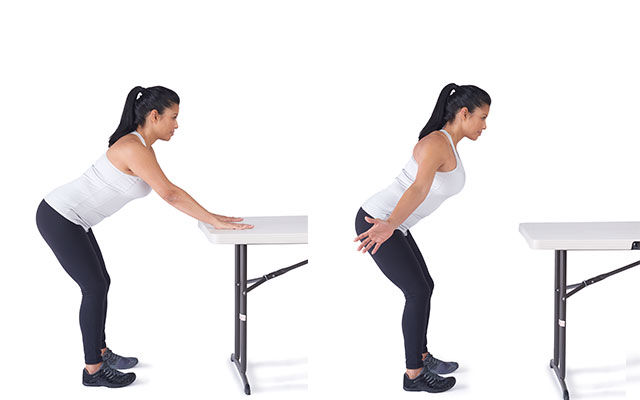
- Stand about 2 feet behind a chair, table, or box that’s about belly-button high, and place your hands on top.
- Hinge forward at the hips, pressing your chest down and sliding your hands forward. Hold for 15 to 30 seconds.
- Extend your arms to your sides, thumbs up, and squeeze your shoulder blades. Hold for 10 to 15 seconds.
- Slowly return to a standing position.
What it does: Strengthens your lower back and midback, lengthens your hamstrings, and stretches the front of your chest.
Reps: One, controlled and slow.
2. Bird Dog
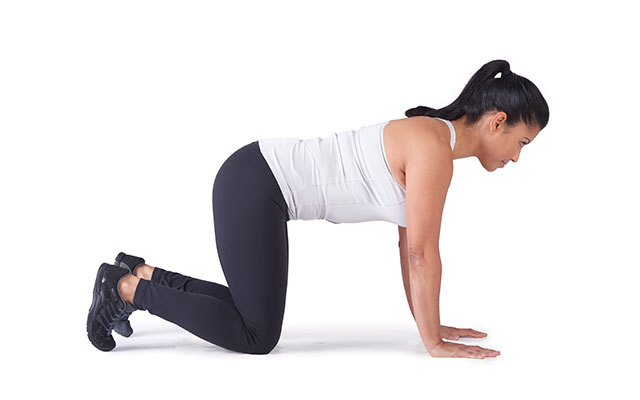
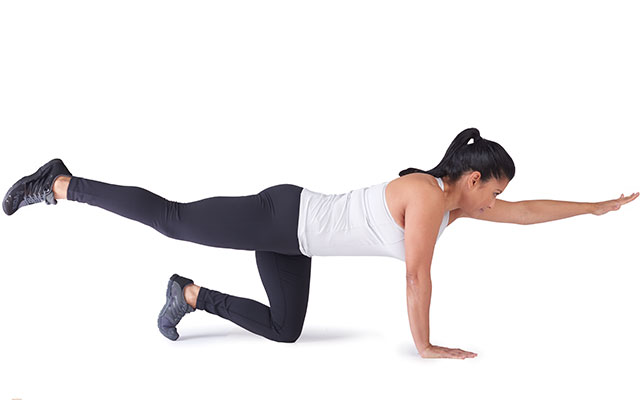
- Assume an all-fours position. Contract your core by drawing your belly button toward your spine and flatten your spine as though you’re balancing a glass of water on your lower back.
- Extend your left arm forward, palm down, and your right leg behind you, until they are parallel to the floor.
- Hold extended position for a three-count, then slowly return to the starting position.
What it does: Strengthens your spinal erectors — the back muscles responsible for keeping you upright. (For additional form tips, see “BREAK IT DOWN: The Bird Dog“.)
Reps: 10 per side
3. Glute Bridge
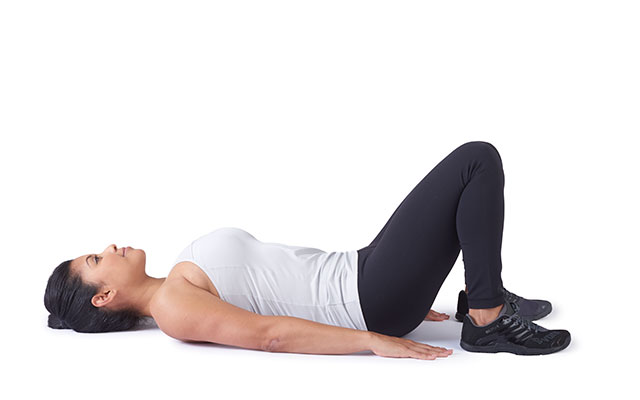
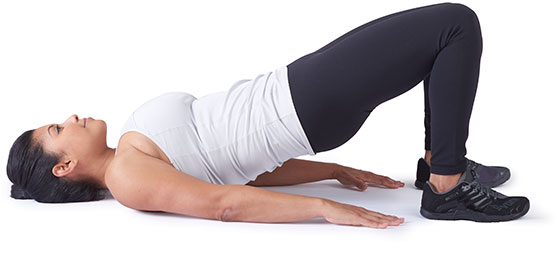
- Lie on your back with your knees bent and feet flat on the floor about hip width apart.
- Engage your core and press your feet into the floor, raising your pelvis until your body forms a straight line from your knees to your shoulders.
- Hold for a slow five-count.
- Slowly reverse the movement — don’t collapse — and return to the starting position.
What it does: Strengthens your glutes, which tend to weaken from habitual sitting. ( See “BREAK IT DOWN: The Glute Bridge” for more tips and variations.)
Reps: 10 to 15
4. Cat-Cow


- From an all-fours position, slowly arch your back, looking up and forward as you lower your stomach toward the floor.
- Slowly reverse the movement, rounding your back while pushing the floor away with your hands.
- If you experience pain at any point, limit the range of motion to the pain-free segment of the movement.
What it does: Improves spine mobility and teaches unified movement of the spine. (Learn how to refine your cat-cow flow by seeing “BREAK IT DOWN: The Cat-Cow“.)
Reps: 10
5. Low Lunge
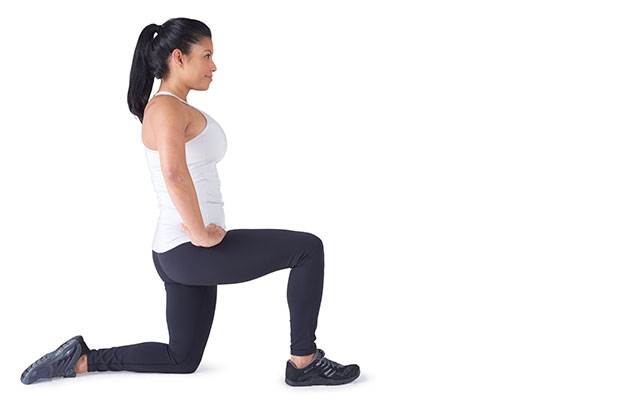
- Assume a half-kneeling stance, left knee down, right foot flat on the floor.
- Contract your core muscles and left glute, then shift your hips forward until you feel a deep stretch in the front of your left hip.
- Hold this position for up to 60 seconds.
What it does: Lengthens your hip flexors, which can pull the top of your pelvis down and cause back pain.
Reps: One or two 60-second holds; five to 10 shorter holds of 20 seconds or less.
6. Lower-Trunk Rotation
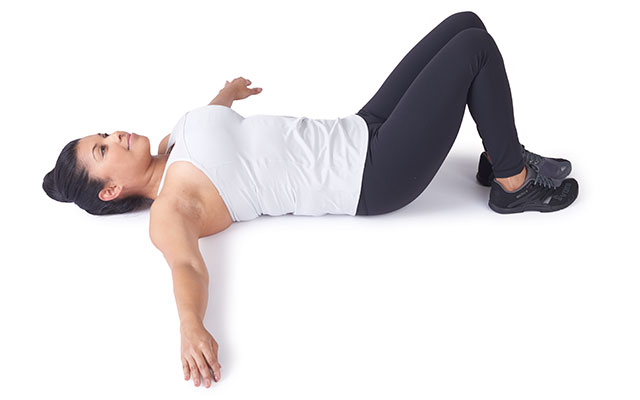

- Lie on your back with knees bent, feet flat, and arms out to the side, palms down.
- With knees and feet together, gently rock your knees to the left until you feel a mild stretch in your lower back.
- Hold for a breath, then slowly reverse the movement and repeat on the other side.
What it does: Gently lengthens the muscles on either side of your spine, and teaches proper rotation in the lower body.
Reps: 20
7. Shin Box
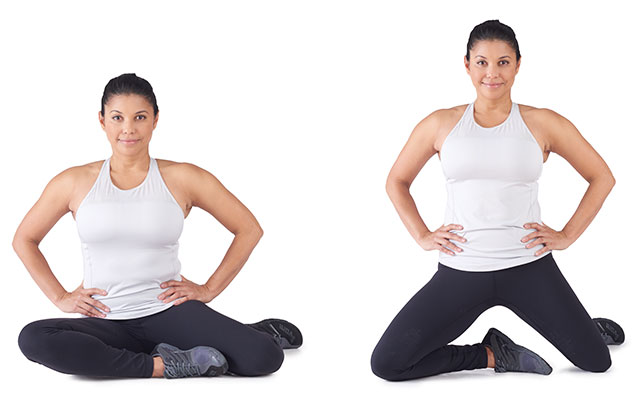
- Sit on the floor with your knees bent and your feet planted in front of you.
- Slowly lower your knees to the right until they touch the floor.
- Push your hips forward and rise to a kneeling position, squeezing your glutes.
- Reverse the movement to sit, then repeat on the left.
What it does: Improves mobility and coordination of the hips.
Reps: 10 per side
8. Plank
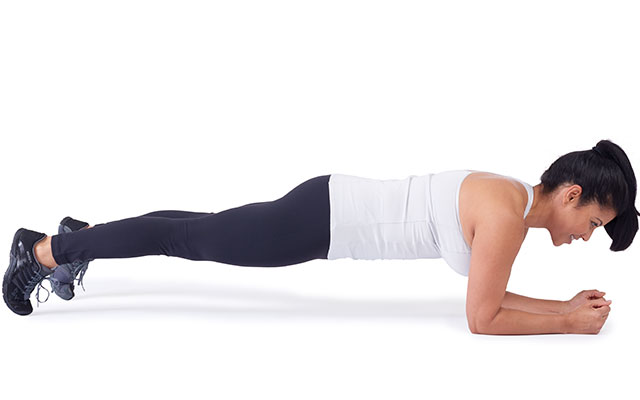
- Assume a low plank position, resting on forearms and toes, with core engaged and a flat lower back.
- Your body should be straight from your heels to head. Hold as long as you comfortably can with good form.
What it does: Strengthens and stabilizes the entire front of your core. (For more variations, see “Fitness Fix: Pump Up Your Plank“.)
Reps: Work up to one 60-second hold.
Support for a Healthy Back
Modern living can be rough on your back. We crush it in the gym, sit for eight hours, fight our way through traffic, then fall asleep watching TV. It’s a sit-down-and-hurry-up lifestyle that often requires us to do way too little or way too much. That’s why, in addition to regularly performing the rejuvenating moves outlined here, you may also have to incorporate some lifestyle modifications to keep your back healthy. Physical therapist Erika Mundinger offers these four tips:
- Stand if you can: Forget expensive ergonomic chairs. And don’t sit on an exercise ball for long periods — it may make back problems worse. Replace your desk with a standing version; using one has been shown to increase physical activity and reduce pain.
- Sit better: If you must sit, place a lumbar pad or a rolled-up towel horizontally behind your lower back to keep it in its naturally arched position. And even then, get up often — at least every 15 to 20 minutes, for at least a minute at a time.
- Lift safely: Your dad was right! When you’re lifting something heavy, lift with your legs. Don’t round your back forward. Instead, bend your knees, flatten your back, and push your hips back behind you. You’ll protect your spine as your hip and thigh muscles do the work.
- Mix it up: If you’ve been doing the same workout routine for three months or more, it’s time for a change. Repetitive movement — even the healthy kind you do in the gym — can cause overuse injuries. If you’re a runner, go for a swim. Like lifting? Go lighter or heavier, and change up your exercises. Taking your workout outside — where uneven terrain offers better stimuli for the feet, hips, and back — can have noticeable benefits.
Bonus Exercises for a Healthy, Happy Back
Add these strengthening and stretching movements to your back-friendly routine.
Pelvic Tilt
- Lie on your back with your knees bent and your feet flat, about hip-width apart.
- Tighten your abdominal muscles and press your lower back into the floor.
- Hold for five seconds.
What it does: Stabilizes your core, builds mobility in your pelvis and hip joints.
Reps: 10.
Prone Press
- Lie on your front side and place your palms flat on the floor as if for a pushup.
- Direct your eyes upward and slowly press your upper body off the floor, keeping your hips on the floor, your shoulder blades tucked, and your glutes engaged.
- Slowly return to the starting position.
- Limit the movement to your pain-free range of motion.
What it does: Improves mobility in the lower back.
Reps: 10.
Swimmer
- Lie on your front side with your arms extended overhead.
- Contract your stomach slightly, keeping it tight throughout the movement.
- Simultaneously raise your right arm and your left leg off the floor a few inches, extending both limbs fully for five seconds.
- Slowly lower the limbs to the floor and repeat the movement on your opposite side.
What it does: Builds strength and stability in your extensor muscles — your lower back and glutes.
Reps: 10 per side.
Go deeper. Check out the moves from the back resiliency workout by visiting “The Workout: Strengthen Your Back (Video)“.
This article originally appeared as part of “Rebuild Your Back” in the March 2016 issue of Experience Life. For another part, see “The Whole Back System.” To order a back issue, call 800-897-4056 (press option 3 when prompted). To get all the articles from each issue of Experience Life, subscribe online at ELmag.com/articlesubscribe.
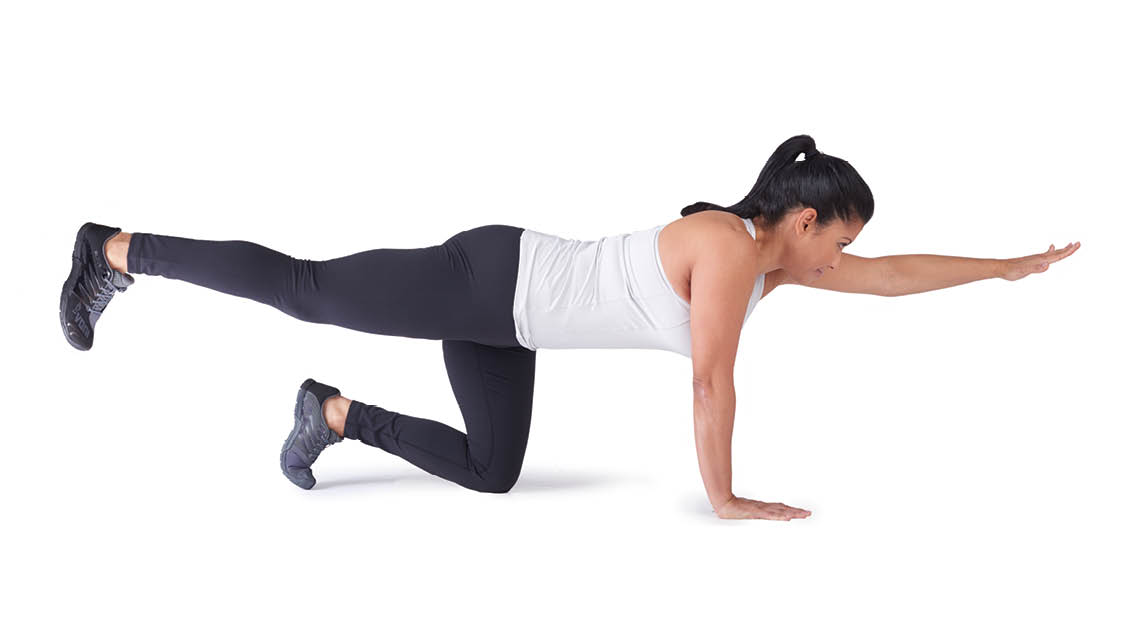

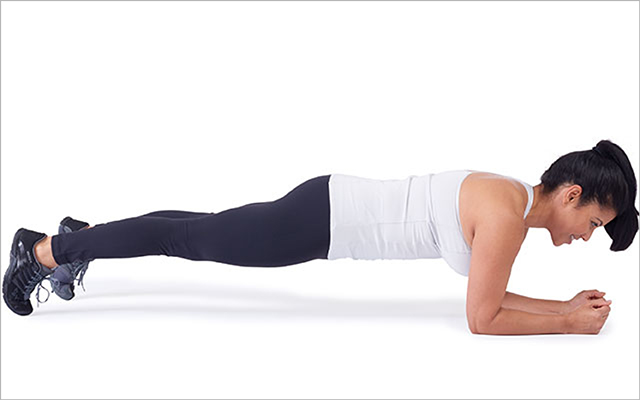
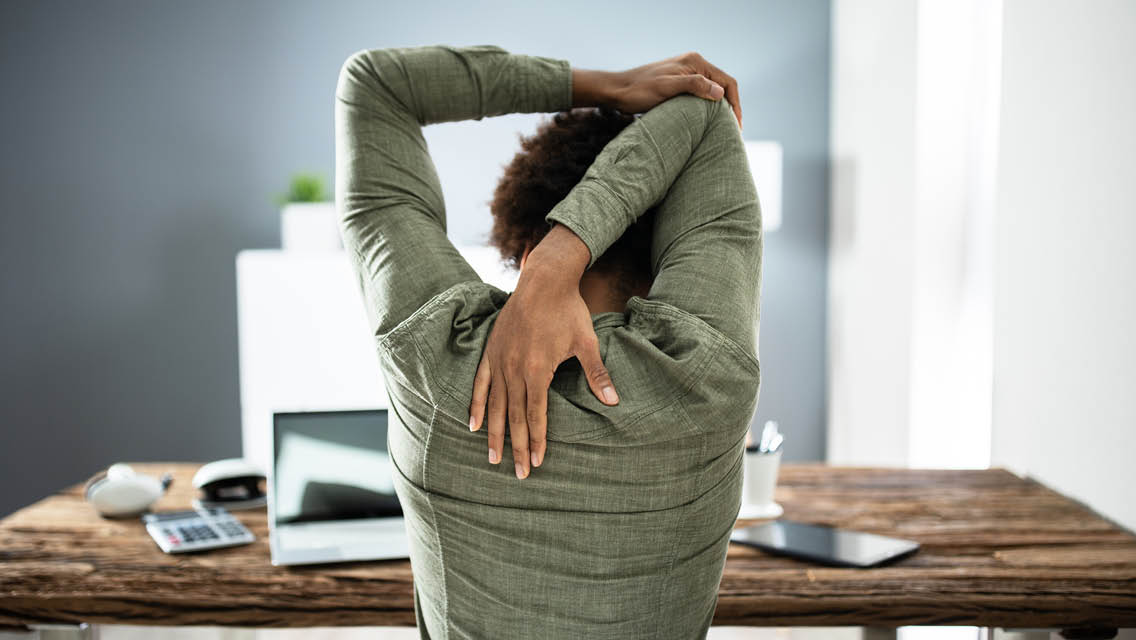
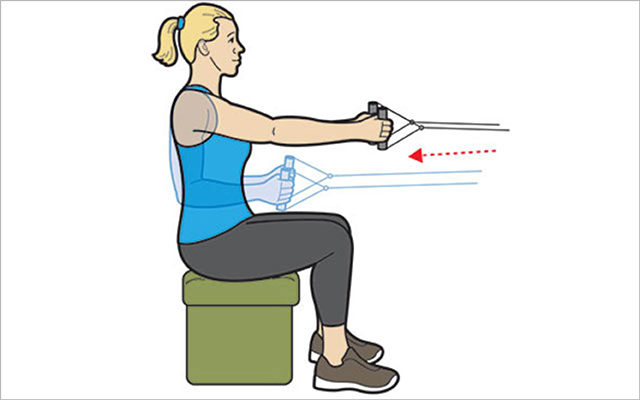
This Post Has 0 Comments